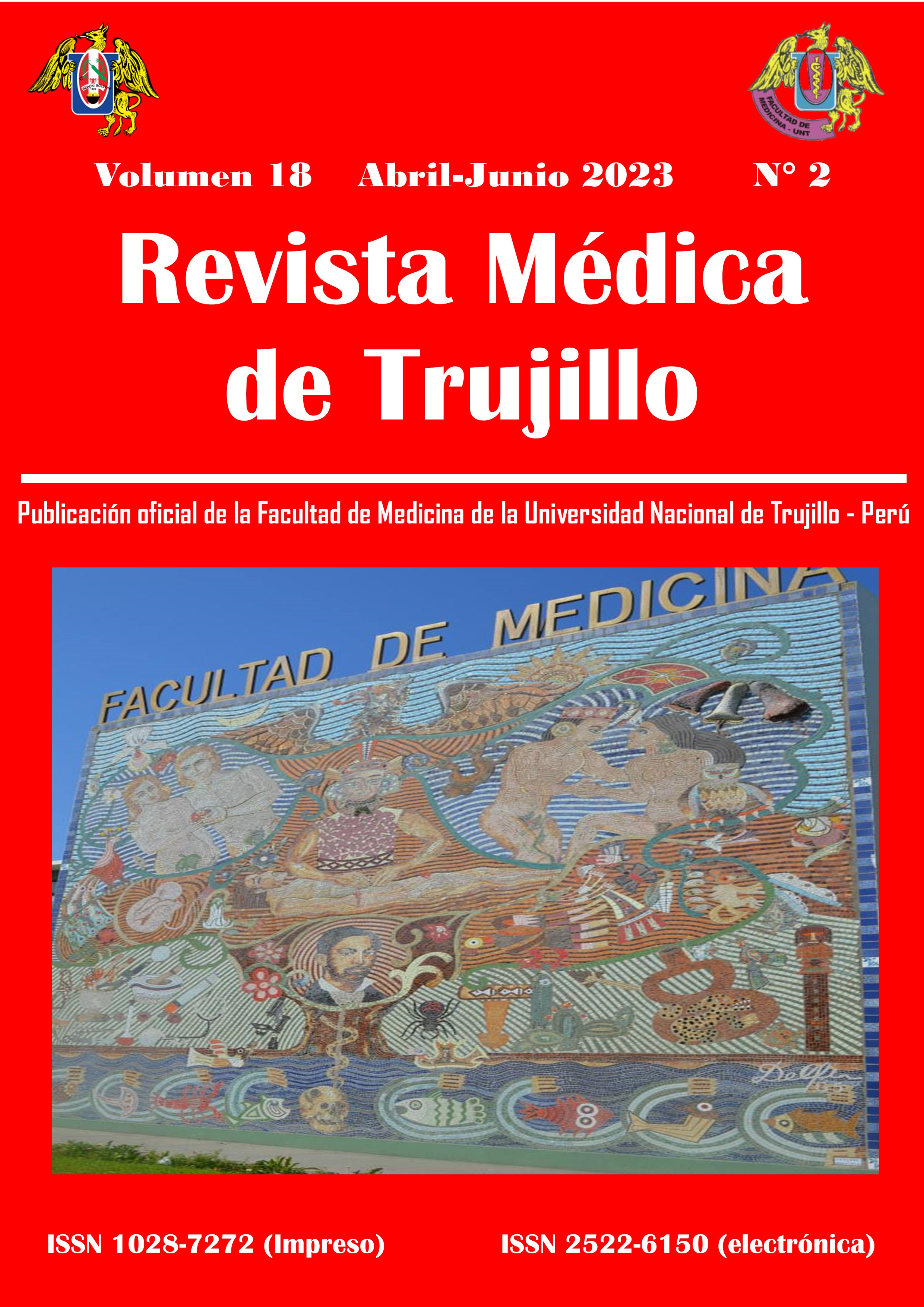Resistencia de Eschericha coli productora de Betalactamasas en infección urinaria de una clínica de Lima
Resistance of Beta-lactamase-producing Eschericha coli in urinary infection in a clinic in Lima
DOI:
https://doi.org/10.17268/rmt.2023.v18i2.5589Keywords:
Infection, urinary tract, resistance, Escherichia coli, antibiogramAbstract
Objetive: To determine the prevalence of E. coli among positive urine cultures and antimicrobial susceptibility according to their ESBL+. Methods: An observational, descriptive, and retrospective case series study was carried out evaluating medical records of patients with urinary tract infections hospitalized in a prestigious clinic in Lima between 2019 and 2021. Positive urine cultures and their antibiograms were analyzed. Results: The highest prevalence corresponded to Escherichia coli with 65% and, particularly 15%, that of Escherichia coli ESBL+, followed by Klebsiella pneumoniae ssp (14.77%), Staphylococcuss saprophyticus (5.68%), Proteus mirabilis (3.41%), Enterococcus sp. (2.27%), among others. According to the antibiograms, there was a higher prevalence of resistance for E. coli ESBL to the following antibiotics: Amoxicillin- clavulanic acid (100%), ampicillin (100%), cephalotin (100%), cefazolin (100%), cefepime (100%), cefotaxime (100%), ceftazidime (100%), ceftriaxone (100%), cefuroxime (100%), ciprofloxacin (92.31%), among others. On the other hand, E. coli ESBL+ had greater sensitivity to fosfomycin (100%), imipenem (100%), meropenem (100%), nitrofurantoin (92.31%). Conclusion: that the highest prevalence of urinary tract infection was by E.coli non-ESBL, which were highly sensitive to cephalosporins and quinolones, while for E.coli ESBL +, they were totally sensitive to fosfomycin, imipenem and meropenem.
Downloads
Published
How to Cite
Issue
Section
License

This work is licensed under a Creative Commons Attribution-NonCommercial 4.0 International License.










